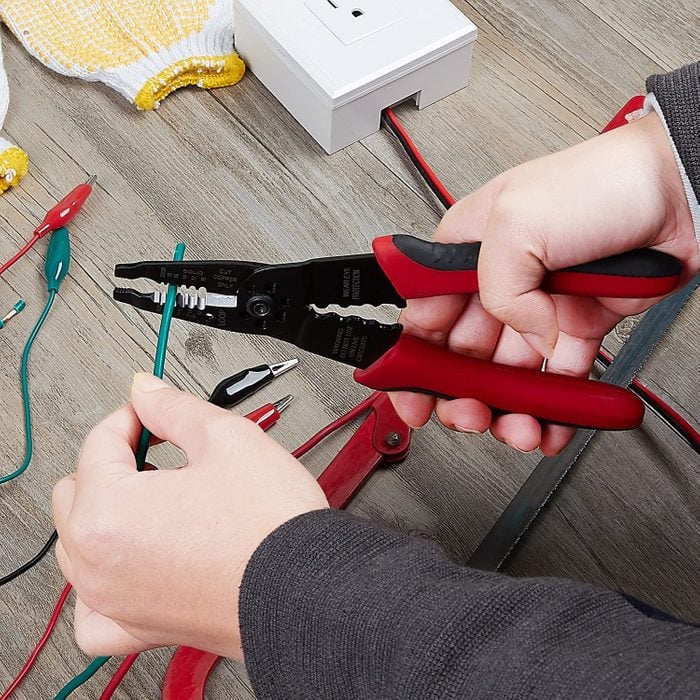The Best Wire Strippers of 2022

Buying a Wire Stripper
When you’re doing electrical wiring, it’s easy to approach wire stripping as an afterthought. There’s not much to it, just removing a small length of insulation from the ends so you can make connections.
But if you’re not careful, you could cut through the actual wire and/or your fingers. Chances of mishaps increase dramatically when working with small wires for automotive systems, electronics and audio equipment.
If you think of a wire stripper as a specialty tool for electricians, you’re right. It can save hours of time during a large wiring project. It also happens to be a really useful tool for DIY wiring, and it’s not expensive.
Pro quality wire strippers that regulate the length of exposed wire, crimp wire connections, cut screws and even double as pliers can cost more than $100. But you can get a basic wire stripper for your home wiring project for less than $10.
Considerations when buying a wire stripper
Start by considering the type and amount of wire you need to strip, and whether you’ll use your wire stripper frequently or occasionally. You should also consider whether you’ll need the tool for other chores. And, of course, think about cost.
Three types of wire strippers
Wire strippers don’t all work the same way. There are three main types:
- Adjustable: With these, you feed the wire through the front and squeeze the handle. The tool compresses just enough to cut the insulation without notching the wire. When you pull the wire out, the insulation jacket stays behind. You can adjust the size of the wire opening, and select the gauge by turning a dial. This type of stripper is typically used for light-gauge wiring in electronics, HVAC and automotive applications.
- Automatic: The tool automatically selects the proper wire gauge so you don’t have to worry about it. This is a real time-saver when working on projects with multiple wires of different gauges.
- Gauged: Electricians favor this type. It resembles a scissors with notched blades, with each notch sized according to a progressively larger wire gauge. Insert the wire in the appropriate notch, close the blades, twist the wire and pull it out. This type usually also has a wire cutter, and the tips of the blades are often serrated so you can use them as pliers.
Important features
Some of the features to look out for include:
- Wire types: Wire diameter is measured in American Wire Gauge (AWG) units. Larger AWG numbers refer to smaller diameter wires. A general-use tool can usually accommodate 10 to 22 AWG wire. If you work with electronics, communications, HVAC or automotive systems, look for a stripper that can handle wire up to 30 AWG. All tools can handle solid wire, but not all can handle stranded wire, which multiple strands of thin wire are braided together.
- Blade quality: Wire strippers must to be sharp to cut effectively. The best wire strippers stay sharp indefinitely, but lower quality ones don’t. The cutting edges are beveled and can’t be re-sharpened.
- Easy of use: A spring-loaded stripper is less tiring to use than one with a handle you need to open after each operation. The spring lets you operate the tool with one hand.
- Length adjustment: Adjustable and automatic strippers sometimes have a length adjustment so you can accurately expose a pre-measured length of bare wire. This is a desirable time-saving feature.
- Clear gauge markings: The markings on the tiny notches of gauged strippers can be difficult to read. If they aren’t embossed, they’ll wear off. Clearly legible markings help you quickly find the right opening and eliminate guessing.
- Comfort: Look for easy-grip silicon or rubber handles. The rubber coating on some less-expensive strippers can slide off, while those on better-quality tools are permanently attached.
- Cost: Prices range from $5 for a basic gauged stripper to $140 or more for high-precision and specialty strippers. Average is around $30.
No comments